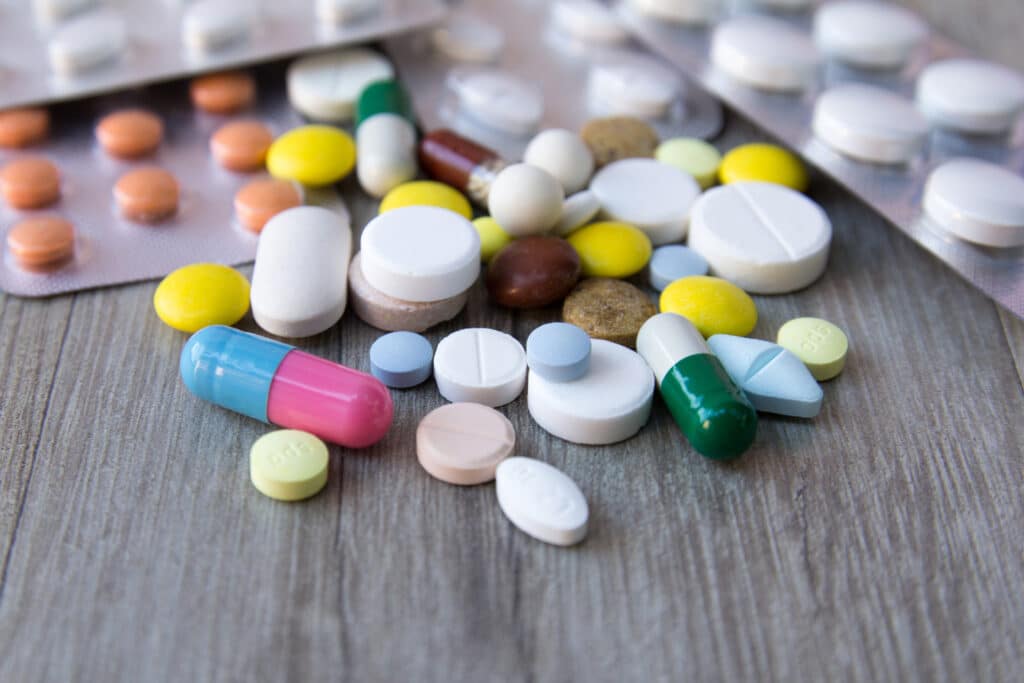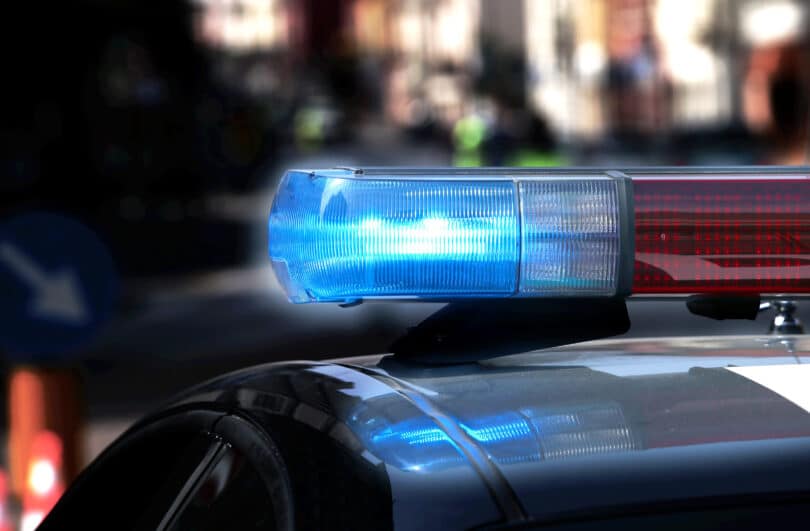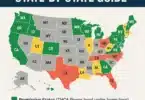We’ve all seen cop dramas. Where the police smash their way into a drug den, find a bunch of drug dealers surrounded by cash and they seize all of the illegal substances. But have you ever wondered what happens to all those drugs the police take during their busts?
It’s not like they just toss them in the bin and call it a day. And, as much as conspiracy theorists would like to think, It’s unlikely that the police will take them for themselves and have a good night out. The truth is, the journey of seized drugs is fascinating and a lot more complex than most of us think. There is a rigid process behind it, and several steps that take place. We’re about to dive into the nitty-gritty of what goes down after the police confiscate those illegal substances. From the moment they are seized to their final fiery farewell, it’s a journey worth knowing about. The reality might even be more interesting than watching a cop drama.
What is a Drug Seize?
It’s a term we hear often, but what does it really involve? A drug seizure is like the opening scene in a crime drama – it’s where the action begins. In simple terms, a drug seizure is when law enforcement authorities take possession of illegal substances. This could happen during a police raid, a routine traffic stop, or through undercover operations. Imagine cops busting into a hidden lab or pulling over a car only to find a stash of narcotics – that’s your classic drug seizure scenario. But it’s not just about grabbing the drugs and calling it a day. A seizure is a carefully executed operation. Police officers or federal agents need to have solid reasons (we’re talking probable cause) to believe that the drugs are present. They often work off tips, surveillance, or ongoing investigations. The Citizens Advice writes:
“The police can only stop and search you if: they have a search warrant. they have reasonable grounds to suspect that you have committed a crime or are about to commit a crime. Reasonable grounds to search can’t be based on an officer’s hunch or instinct.”
Once they’ve got the green light, usually in the form of a search warrant, they swoop in. This is where things can get tense. Officers might be dealing with dangerous individuals, so they have to be quick, efficient, and prepared for anything.
Methodical Collection
During the seizure, every action is methodical. The drugs are collected, and so is any other evidence that could be crucial for a criminal case. This could include drug paraphernalia, cash, weapons, or even documents. It’s all about gathering the evidence needed to build a strong case against the suspects. But a seizure isn’t just a physical operation. It’s also a legal one. The seized drugs and evidence are now part of a legal process. They’re handled according to strict protocols to maintain their integrity as evidence. This means careful documentation, secure storage, and a chain of custody that ensures the evidence isn’t tampered with. Whilst it sounds exciting, and with a dramatic musical score underneath it probably is, a lot of drug seizures are pretty straightforward and bland.

Storage
So what happens next? Imagine this: the police just busted a major drug operation. They’ve got bags of illegal substances, maybe some pills, powders, you name it. First things first, the seized drugs are treated like VIP evidence. They’re carefully collected, labelled, and logged. This part is extremely crucial because every bit of that stash is potentially a key player in a case. The police need to know where each item came from and who handled it. Nothing can go unnoticed or undocumented. Now, where do these drugs go? Well, first, Into secure evidence lockers or warehouses. These aren’t your average storage units. We’re talking high-security, Fort Knox-style setups. Some smaller hauls might stay at the local police station, but with bigger amounts – those get sent to secure federal or state vaults. Landmark Recovery writes:
“Drug trafficking and manufacturing cases can be long, drawn-out processes as they move through the courts. Because of this, seized evidence can remain in storage for months or even years while the trial is ongoing. Sometimes they are kept until the opportunity to appeal the case is exhausted, after which, there’s a good chance that the drugs will be destroyed.”
As you can see, trials can drag on, and until they’re wrapped up, those drugs aren’t going anywhere. The nation of Ireland recently busted their largest quantity of drugs ever – 2,253kg of Cocaine. This is worth around 157 million euros. What this proves is that police authorities may be housing a great amount of illegal substances at one time, waiting for the next step to occur.
Testing and Cataloguing
Testing
Now, let’s dive into the CSI part of the story – testing and cataloguing. Once the drugs are safely locked away, they don’t just gather dust. First up, testing. This isn’t just any old test – it’s a crucial step to figure out exactly what the police have got their hands on. Is it cocaine, heroin, some new designer drug? The lab techs get down to business, running all sorts of tests. They use chemicals, smart machines, and a whole lot of know-how to identify each substance. But it’s not just about naming the drugs. These tests can also show how pure they are or if they’re mixed with other substances. Pure, high-grade narcotics can lead to more serious charges than stuff that’s been cut with other drugs.
Cataloguing
Then there’s the cataloguing part. Think of it as an extremely organised library system, but for drugs. Every bit of the haul gets its own record – where it was found, how much there is, every little detail. This part is important for keeping track of the evidence. When a case goes to court, the lawyers and judges need to know exactly what was seized, down to the last gram. It’s all about the details, and in the world of law, details are of course crucial.

Disposal Methods
Alright, now we’re getting to the grand finale – what actually happens to these drugs once they’ve had their day in court? The most common method is Incineration. A fiery farewell to all those illegal substances. Picture this: a massive incinerator, flames roaring, and into the fire goes the drugs. It’s like a bonfire, but instead of marshmallows and campfire songs, it’s narcotics going up in smoke. However, these incinerators are high-tech and super secure. The temperatures are so hot that everything is reduced to ashes almost instantly. But not all places do it the same way. Some might use crematories, like the ones used for human remains. Others might go for foundries or hospital incinerators. And then there are the specialised businesses that handle this kind of thing. Each place has its own recipe for drug disposal. In some instances, places even use 55-gallon drums to torch the drugs. The idea is to burn everything so thoroughly that there’s nothing left to use.
Problems
In the US, and many other nations, there can be issues with disposing of illegal substances. When it comes to getting rid of seized drugs, it’s not just a free-for-all. There are a lot of rules and regulations that the police have to follow. Many states have different laws regarding the environmental impact that burning a large quantity of drugs has. Most authorities will pay other contractors to get rid of the substances, but this can be difficult depending on which state they’re in. CBS writes:
“It can be a dilemma for officers who must either arrange for destruction or allow drug evidence to accumulate, which risks making the storage area a potential theft target”
So how much does this all cost? Well, to give an example, CBS goes on to report this:
“Agencies generally must pay. Heritage has destroyed about 10,000 pounds of drugs and paraphernalia since July for the patrol, at a cost of roughly $22,000… The funding came from seized drug money, which is also used for drug enforcement and drug-abuse prevention programs.”
In essence, police authorities will use seized drug money as a way to pay for the destruction of the drugs themselves. However, this is usually with larger amounts, police departments with small quantities of drugs can find ways to destroy the substances themselves. The most important element is to burn them at such a high temperature that it avoids any excess chemical waste being released into the atmosphere.
Conclusion
Well there you have it: the exciting but potentially also pretty straightforward truth about police drug disposal. A process that, while often unseen, is happening constantly around the world. Every stage of this rigid system is important and has its own individual purpose. Whilst cop dramas may want to make it seem like an exciting, life-or-death process – there’s probably just a lot of coffee, and a bunch of laborious paperwork.
Hello readers. We’re happy to have you with us at Cannadelics.com; a news source here to bring you the best in independent reporting for the growing cannabis and hallucinogen fields. Join us frequently to stay on top of everything, and subscribe to our Cannadelics Weekly Newsletter, for updates straight to your email. Check out some awesome promos for cannabis buds, smoking devices and equipment like vapes, edibles, cannabinoid compounds, amanita mushroom products, and a whole bunch more. Let’s all get stoned together!







